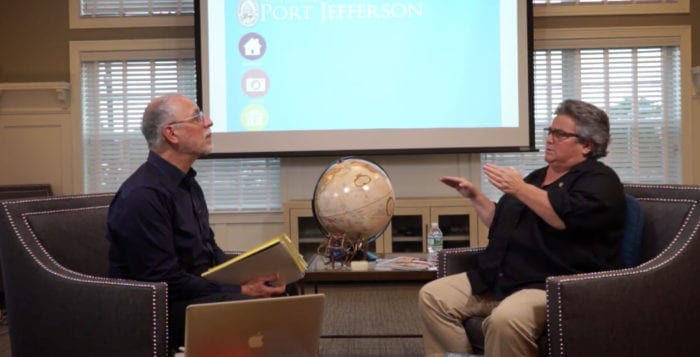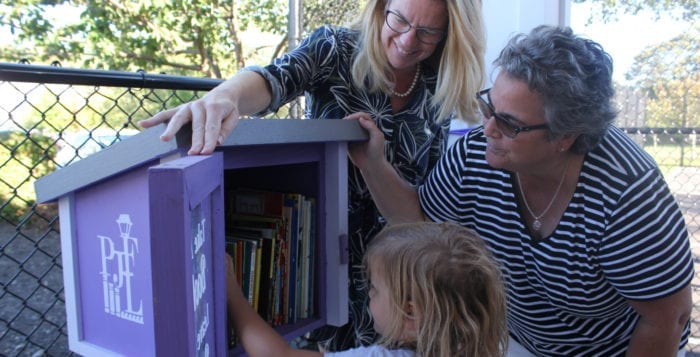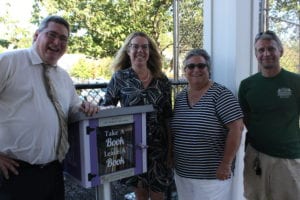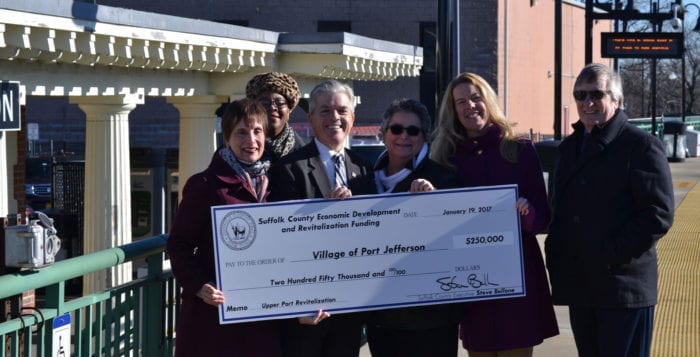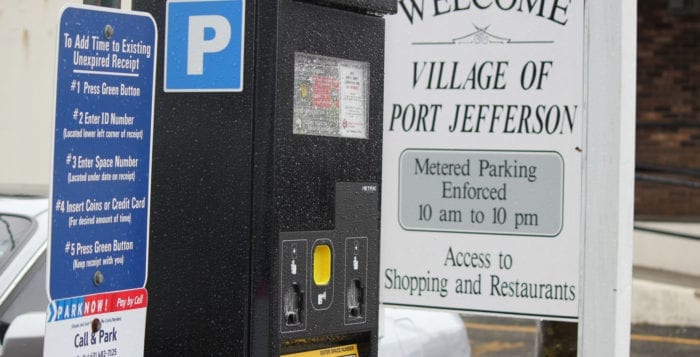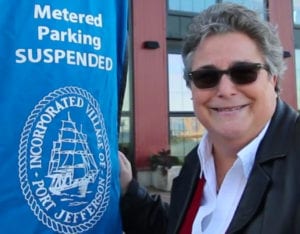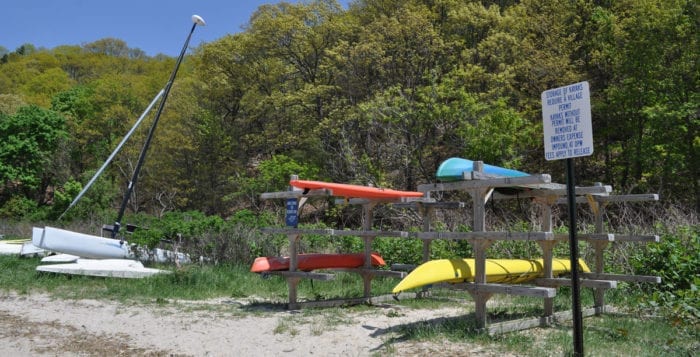Port Jefferson Village is facing an array of issues threatening to upset the status quo in both the near and long term. To help in keeping taxpayers informed on the important set of circumstances likely to impact property taxes and other aspects of daily life in Port Jeff, village Mayor Margot Garant will appear in a series of videos to be released on the village’s website and Facebook account called “Port Jeff Update with Mayor Garant.”
The conversations feature Garant and village resident Dom Famularo in a one-on-one setting responding to questions sent in by members of the public. The first video, released Oct. 16, tackled the village’s tax certiorari legal battle with Long Island Power Authority and the impact an impending settlement will have on villagers’ property taxes going forward, which the mayor dubbed “LIPA 101.”
Garant said the goal of the new communications was to provide her the chance to address the community directly in an uninterrupted fashion, giving her the ability to inform the public on the issues and address misconceptions she said she regularly sees on social media and in conversations.
“The internet right now doesn’t give you the opportunity to have that sort of exchange and people were asking lots of questions,” she said in an interview. “I was trying to figure out, do I like a town hall setting? And I was like, the town hall setting is still not going to give me the opportunity to control the conversation. And I think that might sound egotistical to a certain extent, but the issue is I just want the whole thing on the table.”
In the video, Garant said the village entered into a settlement agreement with LIPA in April to establish a gradual reduction of the amount of money the utility pays in property taxes based on the assessed value of its Port Jeff based plant. The legal cases are based on LIPA’s contention its plants are over-assessed based on decreasing energy demand. Garant said the village is essentially waiting to sign the paperwork to finalize the settlement, as LIPA continues analogous cases with the Town of Huntington and Northport-East Northport School District which is holding up the official completion of the village and Brookhaven Town’s agreed-in-principle settlements.
The Mayor added that about $3.2 million of its roughly $10 million annual operating budget comes from LIPA, and as part of the agreement that number will be cut in half gradually over an eight-year span. As a result, village residents should expect their Port Jefferson Village property tax bill to increase incrementally during that span. Garant said the village is planning to establish a calculator tool for residents to enter in their own pertinent property tax information which will illustrate how much individuals should expect their taxes to go up.
The first video is about 11 minutes long and as of Tuesday afternoon had nearly 2,000 views on Facebook. Garant said Famularo was selected as the other party for the conversations because of his personality, presence and grasp of the issues.
“I decided to get involved so I could assist with clarifying information and prevent social media rumors,” Famularo said in an email, adding he has been a member of the village’s parking committee for eight years and has never shied away from getting involved. “I did not want to just be that person that is not involved and complains … I am honored to sit with the mayor and have time to ask pertinent questions so all PJ residents can hear and be educated in the tasks at hand. We all need to be involved and take an active role.”
Garant said the next video will address efforts to revitalize upper Port Jeff Village and will be released in the coming days. The videos can be accessed by visiting www.portjeff.com or by typing “Port Jefferson, NY” into the search bar on Facebook.

